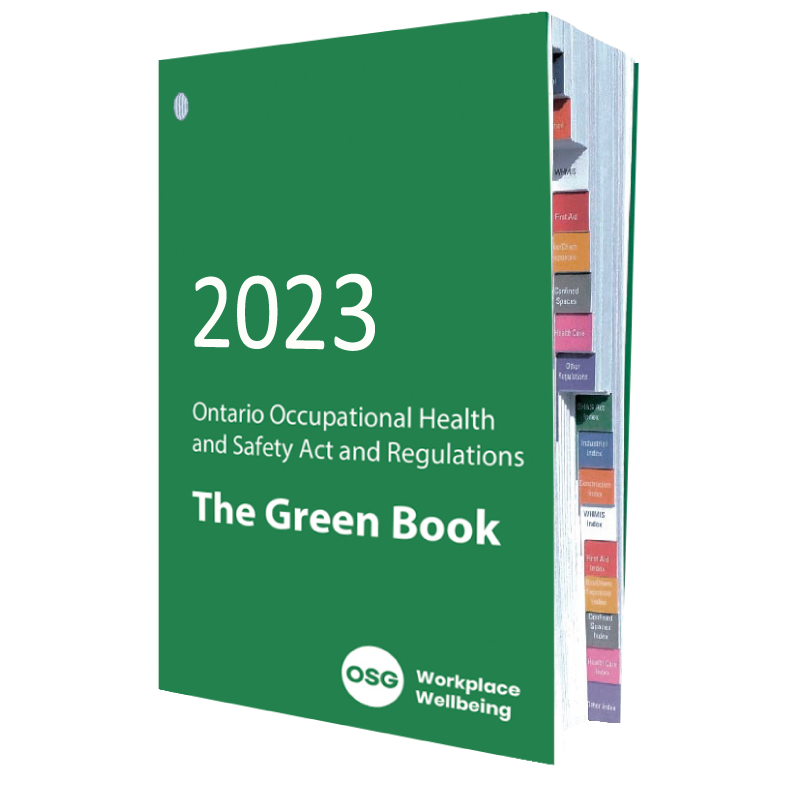5.6 Occupational Health & Safety
Educators support children by maintaining a safe and healthy environment through the prevention and management of illnesses, by ensuring safety checklists are regularly completed, by conducting daily health checks, through modelling appropriate nutritional practices, and through the implementation of so many more measures. Educators are entitled to work in safe and healthy workplaces while they are nurturing the wellness and growth of young children.
Employers have the responsibility to provide safe working environments for employees. Employers are accountable to the Ministry of Labour and must provide health and safety training for all employees. Employees have the right to understand how to protect themselves and keep others safe in workspaces.
Educators, working in licensed child care, are in a unique position as licensed child care organizations are exempt from Workplace Safety and Insurance Board (WSIB) coverage (Essential HR, 2023). Many larger licensed child care organizations opt into WSIB coverage, but some organizations manage worker health and safety issues through independent insurance policies. Regardless of the type of insurance coverage, it is mandatory for all places of employment to provide basic workplace safety training for employees.
What the law says
Ontario’s Occupational Health & Safety Act (OHSA) gives employers responsibility to:
- Keep a safe and well-maintained workplace; to take all reasonable precautions to protect your workers from illness and/or injury;
- Provide information about the hazards in your workplace, proper safety equipment, training, and competent supervision;
- Post the WSIB’s “In Case of Injury at Work” poster and to follow proper procedures in case of injury;
- Post the Occupational Health & Safety Act in your workplace;
- Have worker representation for health and safety-if you have 20+ workers or you deal with a designated substance you must have a joint health and safety committee (JHSC). Construction projects last more than 3 months with 20+ workers must also have a JHSC. Workplaces with more than 5, but less than 20 are required to have a health and safety representative.
Your supervisors also have responsibilities in the workplace. These include:
- Providing a safe workplace and to assign safe work; taking all reasonable precautions to protect your workers from illness and/or injury;
- Informing your workers about job hazards and training them to do their jobs safely;
- Providing supervision to ensure that they work safely and use equipment and protective devices properly where required.
(Workplace Safety & Prevention Services, 2023, para. 1-4)

OSG Ontario. Used under fair dealing. All Rights Reserved.
It is important to read and understand all occupational health and safety policies within an organization before beginning work in the learning space. This helps inform practice for educators to help them ensure their own personal safety as well as the safety of their co-workers. A health and safety information board will be posted near the employee area for additional information and a copy of the Ontario Occupational Health and Safety Act and Regulations: The Green Book.
Employees of an early years setting also receive basic health and safety training, information about hazardous materials through Workplace Hazardous Materials Information System (WHMIS) training, and knowledge of preventative measures to ensure optimal health and safety conditions for all employees while working in their specified positions.
Watch the following video for a brief introduction to WHMIS:
Video: “WHMIS 2015 Introduction and Overview | OnlineWHMIS.ca™” by OnlineWHMIS.ca™ [1:54] is licensed under the Standard YouTube License.Transcript and closed captions available on YouTube.
Read and Complete
Read and Complete the online Worker Health and Safety Awareness Workbook to understand your rights as a worker prior to beginning employment in an early years setting.
Occupational Health and Safety Committees & Representatives
Workplaces with more than 20 employees must have a joint health and safety committee (OHSA, 2023). The joint health and safety committee has a minimum of one worker representative and one employer representative. At least one worker and employer member of the joint health and safety committee must participate in approved mandatory training to receive certification.
Any workplace with 6 – 19 employees must have a health and safety employee representative (OHSA, 2023). Regular monthly health and safety inspections must be conducted by the worker representative, with concerns reported to management. Employers must rectify concerns as soon as possible to ensure safe workplaces for employees. Worker representatives are nominated by staff in the workplace.
Workplace Violence and Harassment Policies
Employees have the right to be free from violence and harassment in the workplace in Ontario. Early years settings have policies in place to prevent workplace violence and harassment. These policies will be introduced during the orientation process.
For more information about workplace violence and harassment, read this brochure from the Ministry of Labour.
Safe Lifting Techniques
Educators are often lifting children up onto change tables, carrying infants around the classroom to soothe them when they are upset, and bending over to pick up toys when cleaning up the learning space. Educators need to protect their backs when lifting, bending, kneeling, and carrying heavy loads. Training in safe lifting techniques can help educators protect their backs and ensure physical wellness when working in early years settings.
Watch the following video for more information about safe lifting techniques with children:
Video: “Safe Lifting Techniques of Children” by Pediatric Home Service [5:20] is licensed under the Standard YouTube License.Transcript and closed captions available on YouTube.

